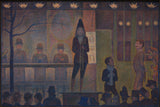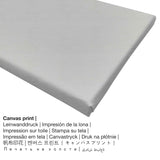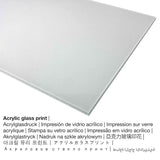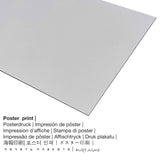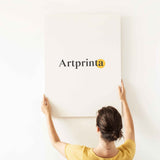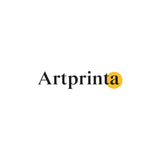Georges Seurat, 1887 - Circus Sideshow (Parade de cirque) - mbipụta nka mara mma.
Ụtụ gụnyere. Mbupu gbakọrọ na ndenye ọpụpụ.
Ngwaahịa nka
The artpiece was made by the male French artist Georges Seurat in 1887. The original was made with the size: 39 1/4 x 59 in (99,7 x 149,9 cm). Oil on canvas was applied by the European artist as the medium of the work of art. This piece of art belongs to the Ụlọ ihe ngosi nka nke Metropolitan nchịkọta dijitalụ. Site n'ikike nke: Ụlọ ihe ngosi nka nke Metropolitan, New York, Arịrịọ nke Stephen C. Clark, 1960 (nwere ikike: ngalaba ọha). Additionally, the work of art has the following creditline: Bequest of Stephen C. Clark, 1960. In addition to this, the alignment of the digital reproduction is in odida obodo usoro na nwere akụkụ ruru nke 3: 2, which means that the length is 50% longer than the width. The painter, drawer Georges Seurat was an artist, whose art style was mainly Pointillism. The European artist was born in the year 1859 na Paris, Ile-de-France, France ma nwụọ mgbe ọ dị afọ 32 na 1891.
Họrọ ụdị ebipụta nka kacha amasị gị
Anyị na-enye ụdị dị iche iche nha na ihe maka ngwaahịa ọ bụla. Nha na ihe ndị a bụ nhọrọ anyị na-enye gị maka nkeonwe:
- Mbipụta kwaaji: A printed canvas mounted on a wood stretcher frame. A canvas has a plastic impression of three-dimensionality. What is more, canvas print generates a cosy and warm appearance. How can I hang a canvas on my wall? Canvas prints are relatively low in weight, which means that it is easy and straightforward to hang the Canvas print without extra wall-mounts. Hence, a canvas print is suitable for any type of wall.
- Poster (akwa akwa akwa): Our poster print is a printed canvas paper with a slight finish on the surface. The poster is best qualified for framing the fine art print with a personal frame. Please keep in mind, that depending on the absolute size of the poster print we add a white margin of something between 2-6 cm around the work of art, which facilitates the framing with a custom frame.
- Mbipụta enyo acrylic: The acrylic glass print, often referred to as a UV print on plexiglass, will turn your favorite original work of art into home decoration and is a good alternative option to aluminium and canvas art prints. The major advantage of a plexiglass fine art copy is that contrasts plus small painting details will be recognizeable because of the very fine tonal gradation in the print. Our real glass coating protects your chosen fine art print against light and heat for decades.
- Aluminom dibond mbipụta (ọla): An Aluminium Dibond print is a material with an impressive depth effect. Its non-reflective surface structure creates a fashionable impression. The colors are vivid and luminous, fine details appear clear and crisp, and there’s a matte look you can literally feel.
Nkwupụta iwu: We try all that we can in order to describe our art products with as many details as possible and to demonstrate them visually on the various product detail pages. Although, the tone of the printing material, as well as the print result may differ marginally from the presentation on the monitor. Depending on your settings of your screen and the condition of the surface, color pigments might not be printed one hundret percent realistically. Bearing in mind that all are printed and processed manually, there might as well be slight deviations in the motif's exact position and the size.
Nkọwa akụkọ ahaziri ahazi
| Nkewa edemede: | ọmarịcha nka |
| Mmeputakwa: | dijitalụ mmeputakwa |
| Usoro mmepụta: | UV kpọmkwem obibi |
| Ihe ngosi: | Germany |
| Ụdị ngwaahịa: | a na-achọ |
| Ihe eji eme atụmatụ: | mgbidi mgbidi, mgbidi ịchọ mma |
| Ntuziaka onyonyo: | usoro odida obodo |
| Oke akụkụ: | ogologo: obosara - 3: 2 |
| Ihe: | ogologo bụ 50% ogologo karịa obosara |
| Ngwa ngwaahịa dị: | Mbipụta iko acrylic (nwere ezigbo mkpuchi iko), mbipụta ọla (aluminium dibond), mbipụta akwa akwa, mbipụta akwụkwọ mmado (akwụkwọ kwaaji) |
| Nhọrọ nke akwa akwa n'elu etiti ihe ndọtị (mbipụta akwa akwa): | 30x20cm - 12x8", 60x40cm - 24x16", 90x60cm - 35x24", 120x80cm - 47x31", 150x100cm - 59x39" |
| Mpempe iko acrylic (nwere ezigbo mkpuchi iko) nha: | 30x20cm - 12x8", 60x40cm - 24x16", 90x60cm - 35x24", 120x80cm - 47x31" |
| Mbipụta akwụkwọ mmado (akwụkwọ kwaaji): | 60x40cm - 24x16", 90x60cm - 35x24", 120x80cm - 47x31" |
| Aluminium dibond ebipụta (ihe aluminium) nha dị iche iche: | 30x20cm - 12x8", 60x40cm - 24x16", 90x60cm - 35x24", 120x80cm - 47x31" |
| ụba: | ngwaahịa anaghị emebi emebi |
Nkọwa nka ahaziri
| Aha nka: | "Circus Sideshow (Parade de cirque)" |
| Nhazi nka: | sere |
| Okwu nche anwụ: | nkà nke oge a |
| Narị afọ nka: | 19th narị afọ |
| Afọ okike: | 1887 |
| Afọ nka: | ihe dị ka afọ 130 |
| Ọkara nke ihe osise izizi: | mmanụ na kwaaji |
| Akụkụ ihe osise izizi: | 39 1/4 x 59 inch (99,7 x 149,9 cm) |
| Ụlọ ihe ngosi nka / ebe: | Museumlọ ihe ngosi nka nke Obodo |
| Ebe ngosi nka: | New York City, New York, Njikota Obodo Amerika |
| Weebụsaịtị nke ihe ngosi nka: | www.metmuseum.org |
| Ụdị nka nka: | ngalaba ọha |
| Site n'aka: | Ụlọ ihe ngosi nka nke Metropolitan, New York, Arịrịọ nke Stephen C. Clark, 1960 |
| Ebe kredit nke ọrụ nka: | Arịrịọ nke Stephen C. Clark, 1960 |
Tebụl nyocha nke onye na-ese ihe
| aha: | Georges Seurat |
| Aha ndi ozo: | Seurat Georges, Seurat George Pierre, Georges Seurat, geo seurat, Seurat Georges Pierre, Hsiu-la, geo. seurat, Georges Pierre Seurat, Georges-Pierre Seurat, Seurat Georges-Pierre, seurat geo., g. seurat, סרא ז׳ורז׳, Sera Zhorzh, Seurat |
| Gender: | nwoke |
| Obodo onye nka: | French |
| Ọrụ: | onye ese, drawer |
| Mba onye si: | France |
| Nkewa onye nka: | omenkà nke oge a |
| Ụdị nka: | Isi okwu |
| Nwụrụ na afọ nke: | 32 afọ |
| Afọ amụrụ: | 1859 |
| Obodo amụrụ: | Paris, Ile-de-France, France |
| Nwụrụ n'afọ: | 1891 |
| Obodo ọnwụ: | Paris, Ile-de-France, France |
© Copyright - ikike ọgụgụ isi nke | Artprinta.com (Artprinta)
What does the curator team of the The Metropolitan Museum of Art write about the artwork created by Georges Seurat? (© Nwebiisinka - The Metropolitan Museum of Art - Museumlọ ihe ngosi nka nke Obodo)
At the Salon des Indépendants in 1888 Seurat demonstrated the versatility of his technique by exhibiting Circus Sideshow, a nighttime outdoor scene in artificial light, and Models, an indoor, daylight scene (Barnes Foundation, Philadelphia). This is Seurat’s first nocturnal painting and the first to depict popular entertainment. It represents the parade, or sideshow, of the Circus Corvi at the annual Gingerbread Fair, held in eastern Paris around the place de la Nation, in spring 1887. Sideshows were staged outside the circus tent, for free, to entice passersby to purchase tickets. The onlookers at the far right are queued on stairs leading to the box office.

